Radio Tower |
|
|
One of the nice things about living out in the boonies is that there are no restrictions on putting up radio antennas. When we first moved here, I was excited at the thought of being able to string all kinds of antennas in the tall trees around the house. Antennas for amateur radio were always a problem in the residential neighborhoods where we had always lived before moving to Missouri. Either the lots were too small or their were other restrictions. I quickly learned that there is a big difference between having lots of trees and having trees in the right places to hang antennas. The antennas I did get strung up ended up being either lower than I wanted or not running in the direction I wanted. I did get pretty good shooting fishing line through the trees with a sling shot however. The solution to the antenna/tree problem soon became obvious. I needed to install a real radio tower. After a bit of shopping around, I selected a 50 foot aluminum tower manufactured in the Glen Martin factory about 85 miles north of here. My neighbor and I drove up and brought it back in his pickup. Over the following winter, I slowly worked on getting the tower up. The first problem to take care of was felling and cutting up several trees that were either in the way or flawed enough that they might drop dead limbs on tower guy lines. Then came digging the hole for the base. This tower required a 3 foot by 3 foot hole 4 foot deep for the base and three other smaller holes for the guy line anchors. That took a lot of jack hammer work. Then came pouring concrete in the holes. Only then did the fun start. I finally got to put the tower up and install an antenna on it. Below are some pictures of the process of raising the tower. Some of the guys from the local ham radio club came out to help with the project. That was really good since they had built or helped build multiple radio towers and new exactly how to proceed. It was the first time for me.
|
|
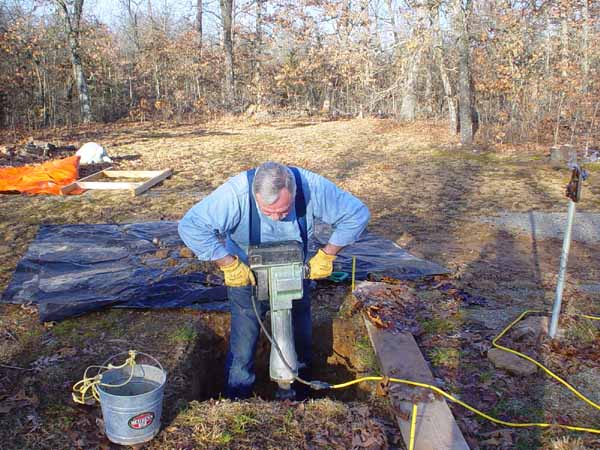
|
|
|
The first step is to dig the hole and pour the concrete base.
All that is just work.
The fun starts when it is time to stand the tower up. |
|
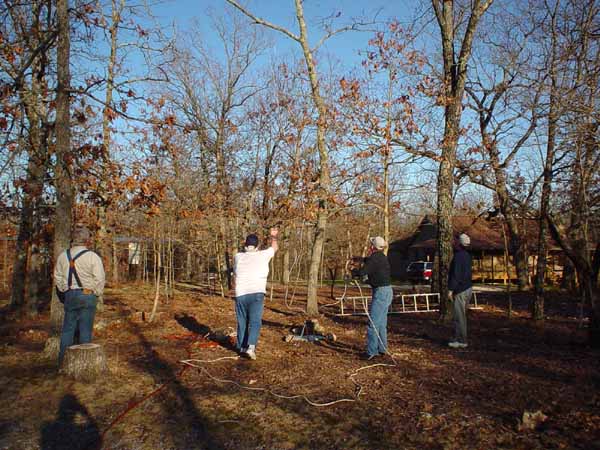
|
|
|
Raising the tower is a time honored radio club work project. Here is Mike
(WB9M) tossing a light weight line over a tree
branch while Bill (K0DEW), Boyde (WD0EIL), and I watch. Mike obviously had previous
practice because he hit the target on his second try! |
|
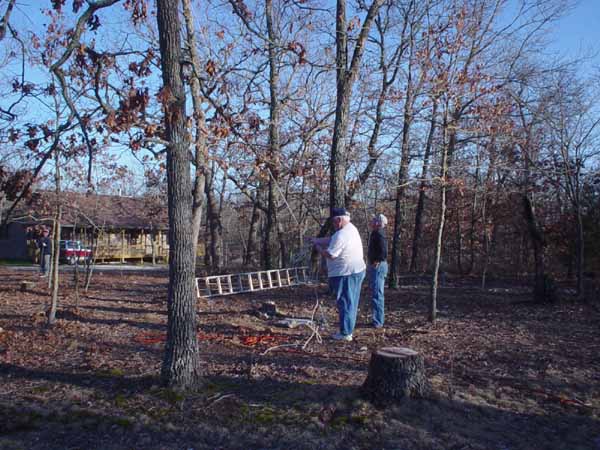
|
|
|
Mike then attached the string to a rope and pulled that over the
limb. The rope will be used to help pull the tower up. |
|
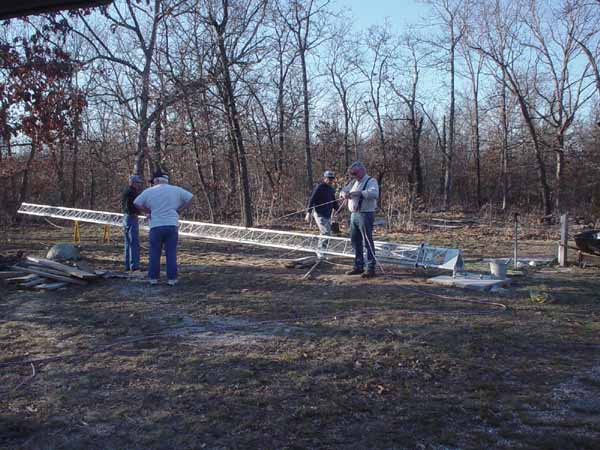
|
|
|
Next we attach the rope to the tower. |
|
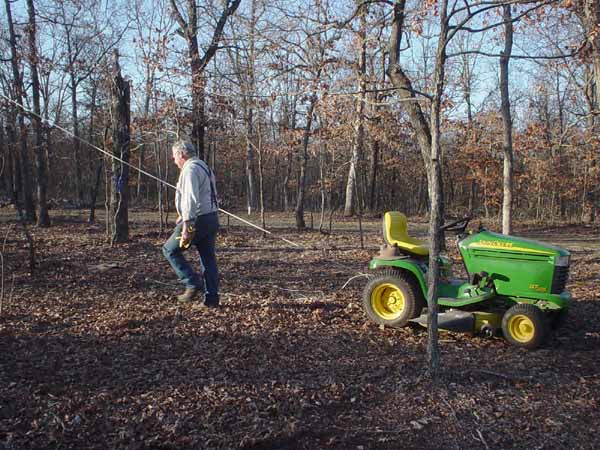
|
|
|
Then we hook up the tractor to the other end of the rope. Don't try
this with an ordinary lawn mower. This machine weighs twice as much as a
lawn mower and is rated for heavy duty towing. |
|
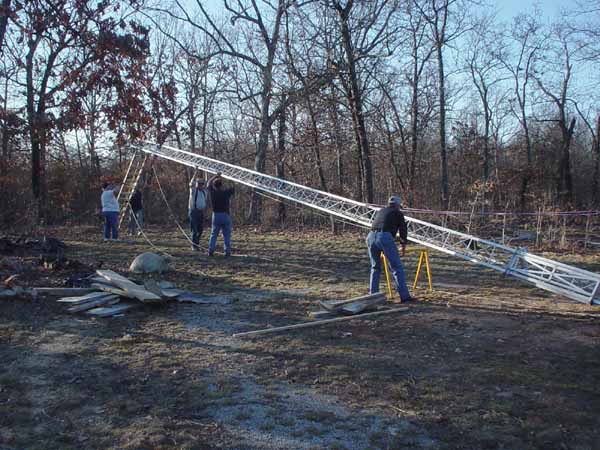
|
|
|
Here we are getting things ready for the lift. |
|
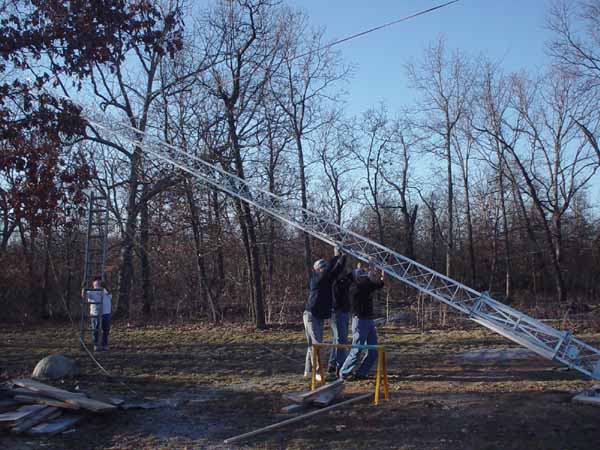
|
|
|
The lift begins. Because of the angles involved, most of the early
part of the lift has to be with human muscles to minimize stress on the
tower. Once it is part way up, more of the work can be done by the rope
pulled by the tractor. |
|
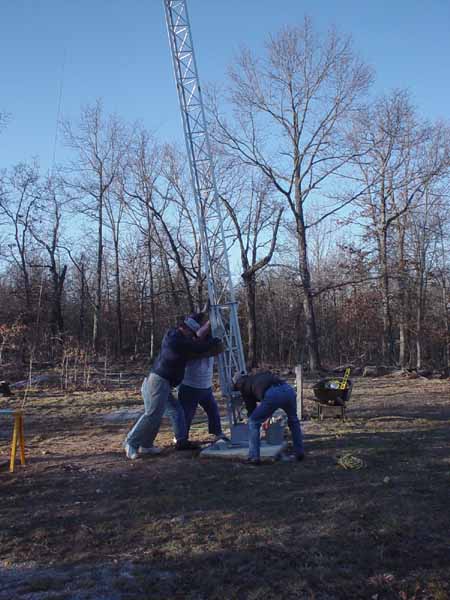
|
|
|
The tower is just about up now so Boyde is getting ready with the base
plate bolts. |
|
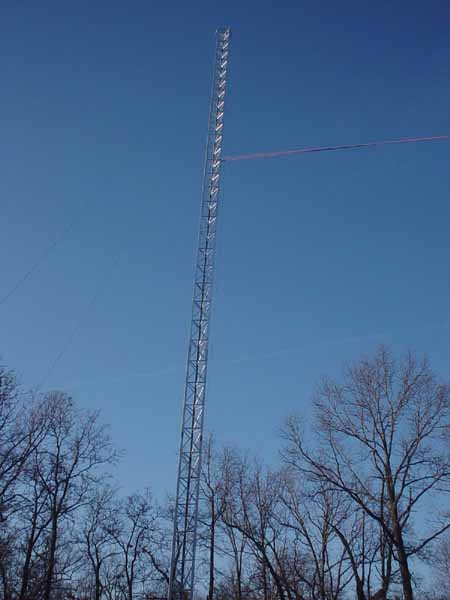
|
|
|
About one minute from horizontal to vertical. |
|
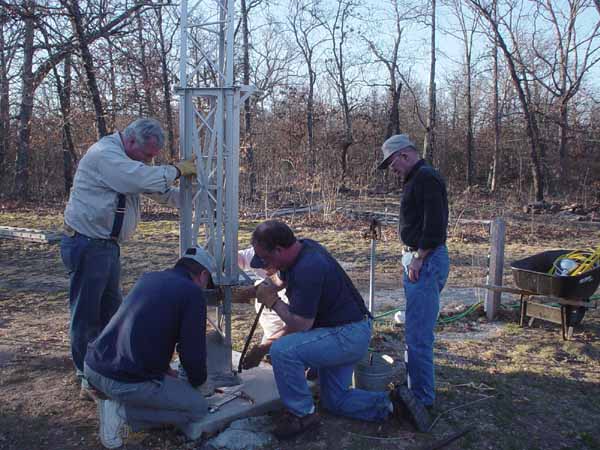
|
|
|
Securing the base bolts. |
|
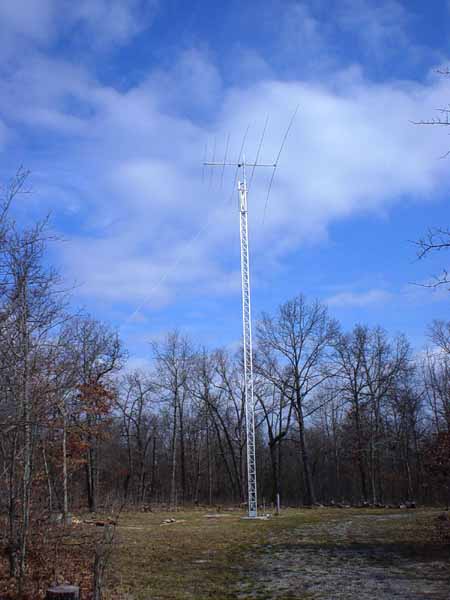
|
|
|
The final product. A Glen Martin 50 foot tower with a Tennadyne T6
Log Periodic beam antenna on top. |
|
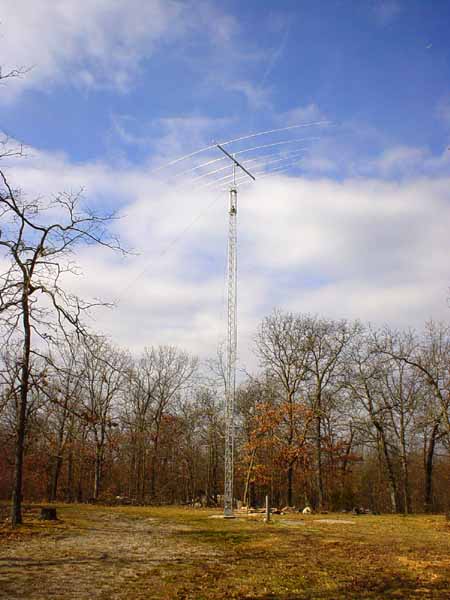
|
|
|
Here is the tower from a different angle. The Hazer tram for raising
and lowering the antenna can just be seen at the top of the tower. |
|